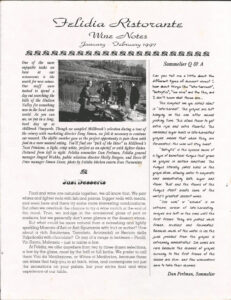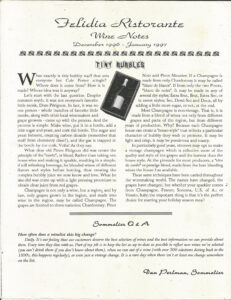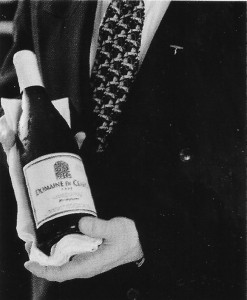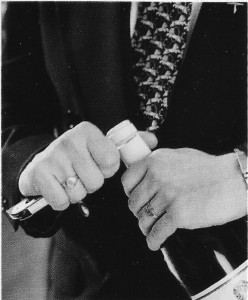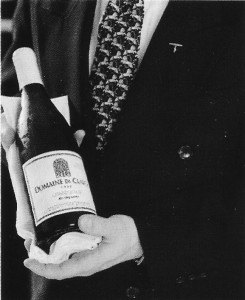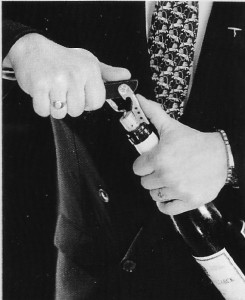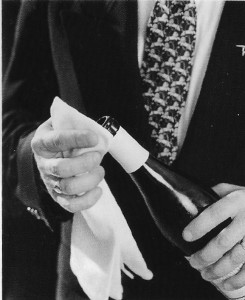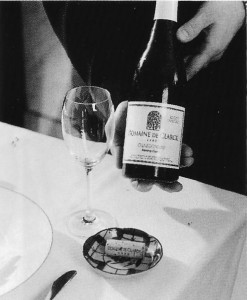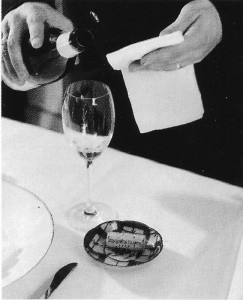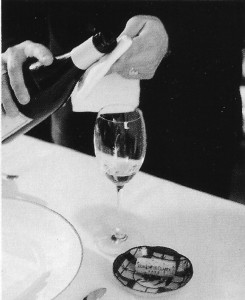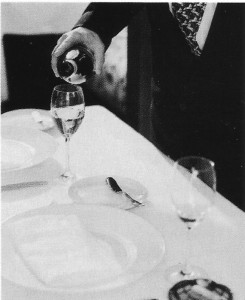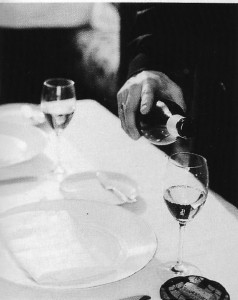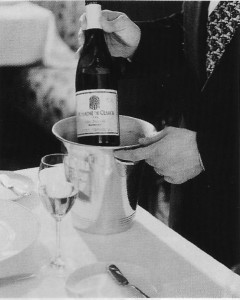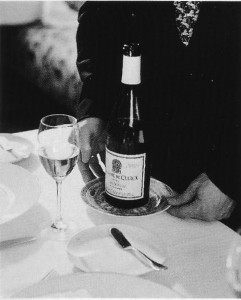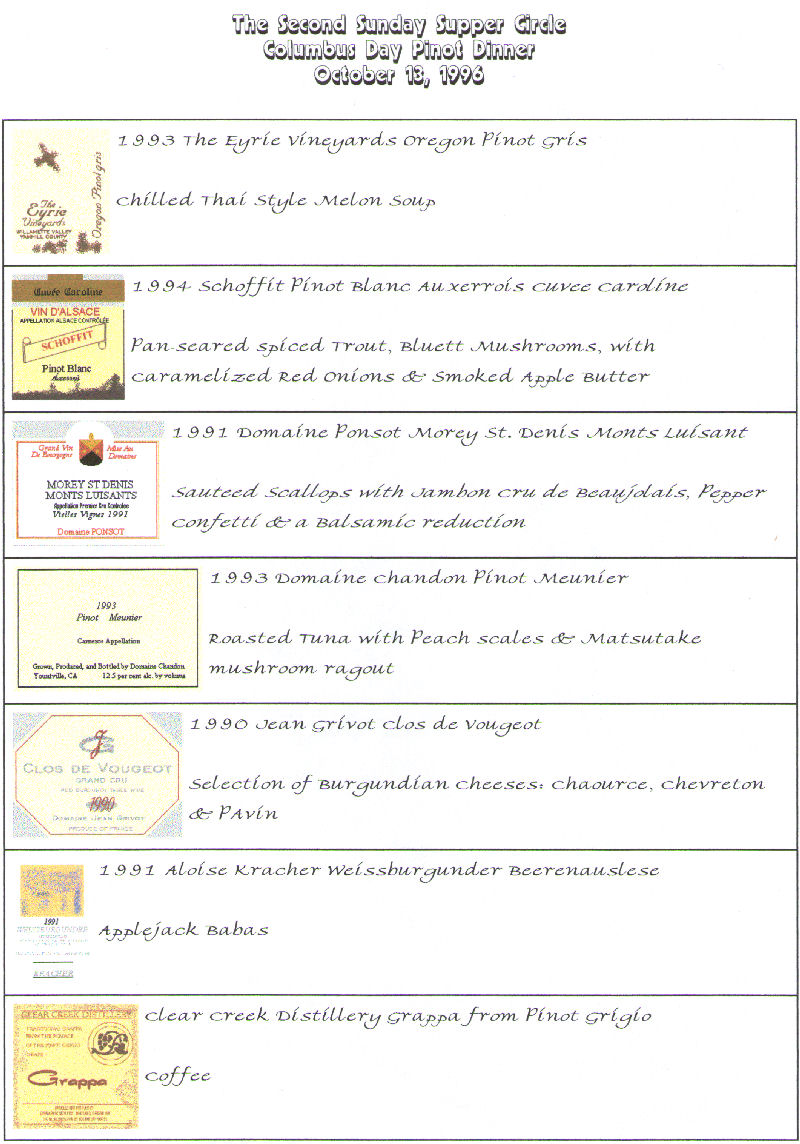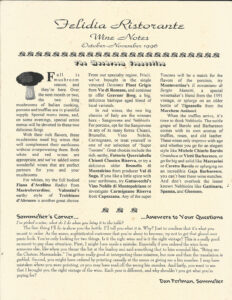Q San Francisco
January 1997
Pages 40-41
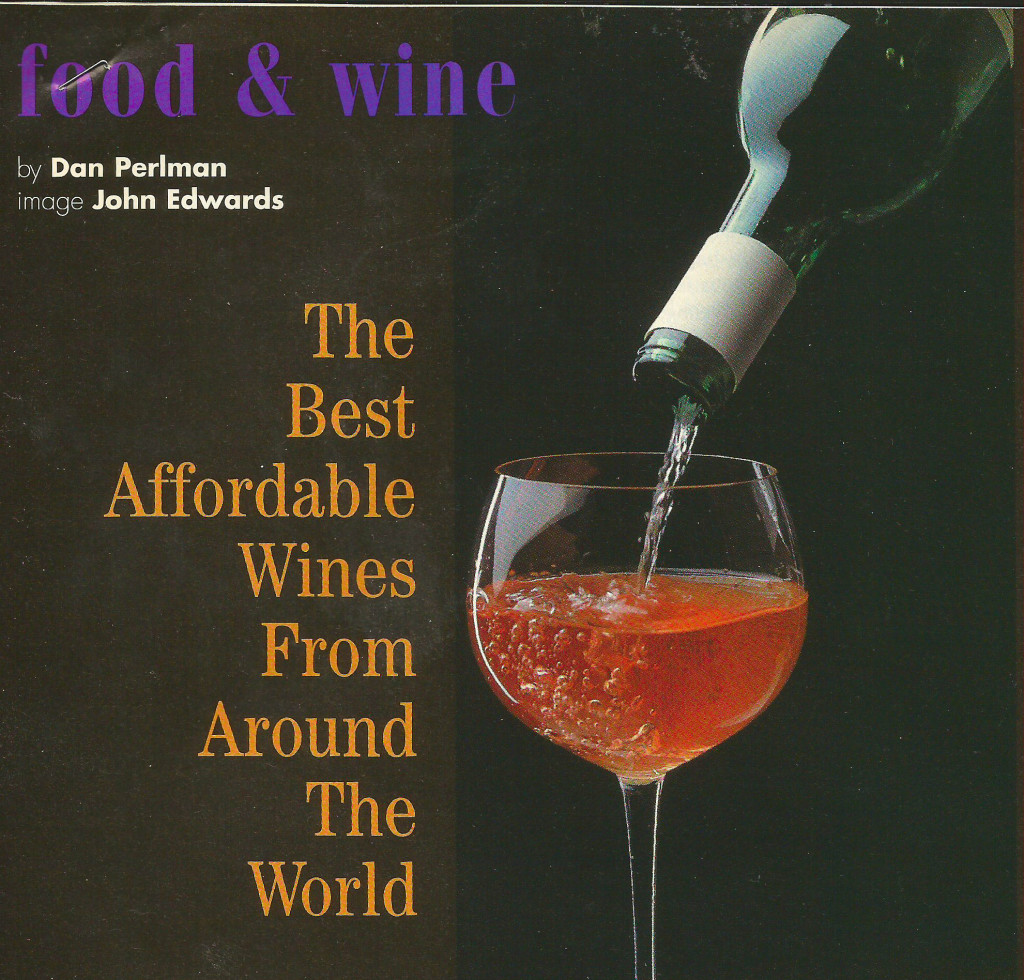 If you were going to go on a round-the-world trip and had only one steamer trunk, what would you take? Tradition says all you need is a towel, toothbrush, and some sort of witty guide to where you plan to be. Socks, a nice sweater, jeans – both ripped and not, maybe a sort of suit or sport jackety thing are all optional but a good idea. I, of course, would add to the list a corkscrew. The last you thing you want is to end up in Bordeaux trying to pry open your Château Lafite with the gum stimulator on your toothbrush.
If you were going to go on a round-the-world trip and had only one steamer trunk, what would you take? Tradition says all you need is a towel, toothbrush, and some sort of witty guide to where you plan to be. Socks, a nice sweater, jeans – both ripped and not, maybe a sort of suit or sport jackety thing are all optional but a good idea. I, of course, would add to the list a corkscrew. The last you thing you want is to end up in Bordeaux trying to pry open your Château Lafite with the gum stimulator on your toothbrush.
Here, with minimal explanation, is a look at some wines that won’t empty your wallet as we travel around the world. On the other hand, I’m not planning to drink from the bottom of the barrel. Due to space limitations, I’m going to take on the unenviable task of picking my current favorite white and favorite red from each major wine producing country.
To coin a phrase, wine starts at home. And from a San Francisco perspective that means Napa Valley. And, ever since the 1970s when a few local wines beat out a few French wines in blind competition, Napa has been known for Cabernet Sauvignon and Chardonnay. Without hesitation, I’d go for what I consider to be one of California’s finest red wines, Mount Veeder Reserve. For white, I would go for Chateau Potelle V.G.S. Chardonnay. The “V.G.S.”, by the way, stands for “Very Good Shit”, except on forms filed with the government where the last word is amended to “Stuff”.
Heading down south, way down south, Argentina and Chile have lately hit the news with the wines they are producing. Most of the hype seems to be for white wines, but I have yet to taste one that I really liked. Both countries have a long history of producing delicious, rustic styled reds, that have only improved with newer winemaking techniques. From Chile, sample the Miguel Torres Cabernet Sauvignon. Argentina’s best winery, in my mind, is Bodegas y Cavas Weinert, who produce a fabulous Cabernet Sauvignon.
Staying in the southern hemisphere, but moving across an ocean, the best of African wines come from South Africa. Now that we’re able to sample wines from this formerly embargoed country, there are some true delights to be had. Mulderbosch Sauvignon Blanc and Blaauklippen Zinfandel rise to the top of my list.
In Europe we find the highest concentration of countries producing wine. Whether it’s jolly old England or somewhere out in the Balkan hills, wine is produced throughout almost every European country. In Portugal the best white wines are probably the Vinho Verdes, especially when made from the Alvarinho grape; Soalheiro stands out as a premium producer. Red wines are generally just called Vinho Tinto, making them somewhat harder to categorize, but my favorite is probably Casa Ferreirinha’s Vinha Grande.
Spain has, of late, due to heavy public relations work, become known for its outstanding Riojas. And there are many that are truly wonderful. However, my favorites come from outside this region. For white, Valdamore Albarino (the same grape as the Portuguese Vinho Verde above), and for red, with no reservations, Torres Gran Coronas, either black or white label, the latter being much less expensive.
France is going to be tough, given the number of wines being produced. However, much of the good wine that we are able to get here is not for the budget conscious, and much of what fits into that consciousness is, to be polite, swill. That helps narrow things down. While Burgundies may be the pinnacle of French whites, to get a really good one costs. For sheer drinking pleasure, I’d opt for a Loire Valley wine, most probably one of Robert Denis’ Touraine-Azay-Le-Rideau wines from the Chenin Blanc grape. For reds, I have of late become enamored with a small Burgundy commune called Maranges, the best producer of which is Baron de la Charriere.
It is amazing how difficult it is to convince people to drink Riesling. As famed wine writer Jancis Robinson said about it, “Unbeatable quality; indisputably aristocratic. Ludicrously unfashionable.” While the cheap stuff is often arguably too sweet or too insipid to drink, there is much that is dry and high quality. From Germany, try a J.J. Christoffel Riesling Spatlese from the Erdener Trepchen vineyard. Reds are a bit tougher, but, if you can find it, Schloss Schonborn Spatburgunder (Pinot Noir) is a real winner.
Italy is as tough or tougher than France to narrow down, mostly because very little of it is high-priced. This leaves a much larger group of wines to select from. I would be, however, perfectly delighted with a bottle of Mastroberardino Fiano d’Avellino on the table for our white, and Capezzana Carmignano Riserva for our red.
Switzerland is, of late, producing many high quality wines, but most are overpriced. Robert Gilliard’s Ermitage de Sion is quite good, several Merlots from the Ticino area have been worth trying. Austrian wines too, are showing promise, Rieslings from the Nigl family are among the best, and, as I write this, just last night I tasted a delicious red, Umathum Blauburgunder (Pinot Noir again).
Greece is now producing wines besides pine-pitch tarnished Retsina that make it to our shores. Boutari makes a very nice red, the Naoussa Grande Reserve, and a light, refreshing white, Santorini.
Down under, as they say, Australia and New Zealand are the hot spots of the winemaking world. Australia being essentially the same size as the U.S. makes it just as difficult to select a favorite. One of the nice things though, is Australian winemakers love to experiment. Two such experiments have come to my attention recently. Tim Adams Semillon is a blast of tropical fruit, and Domaine Leasingham Cabernet-Malbec is a racy, lush red. On the kiwi front, New Zealand has always been best at whites, though recently many producers are trying to imitate a California style. My favorite remains Kumeu River Chardonnay. A new import to this country, Larose Cabernet Blend is outstanding, but will be, for awhile, difficult to find.
That should be enough to fill your shopping basket and delight your palate for at least the next month. Besides, we can always take our towel, toothbrush and corkscrew and set off on another journey again soon.
Q San Francisco magazine premiered in late 1995 as a ultra-slick, ultra-hip gay lifestyle magazine targeted primarily for the San Francisco community. It was launched by my friends Don Tuthill and Robert Adams, respectively the publisher and editor-in-chief, who had owned and run Genre magazine for several years prior. They asked me to come along as the food and wine geek, umm, editor, for this venture as well. In order to devote their time to Passport magazine, their newest venture, they ceased publication of QSF in early 2003.





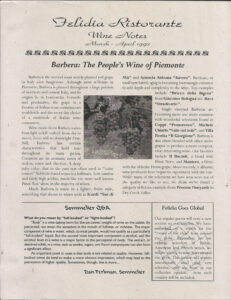 Felidia Ristorante
Felidia Ristorante

